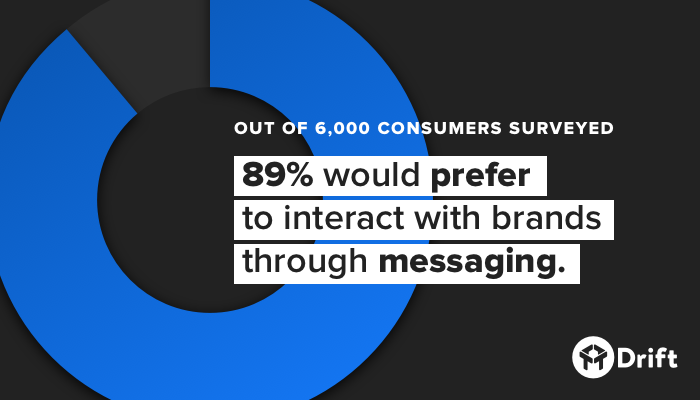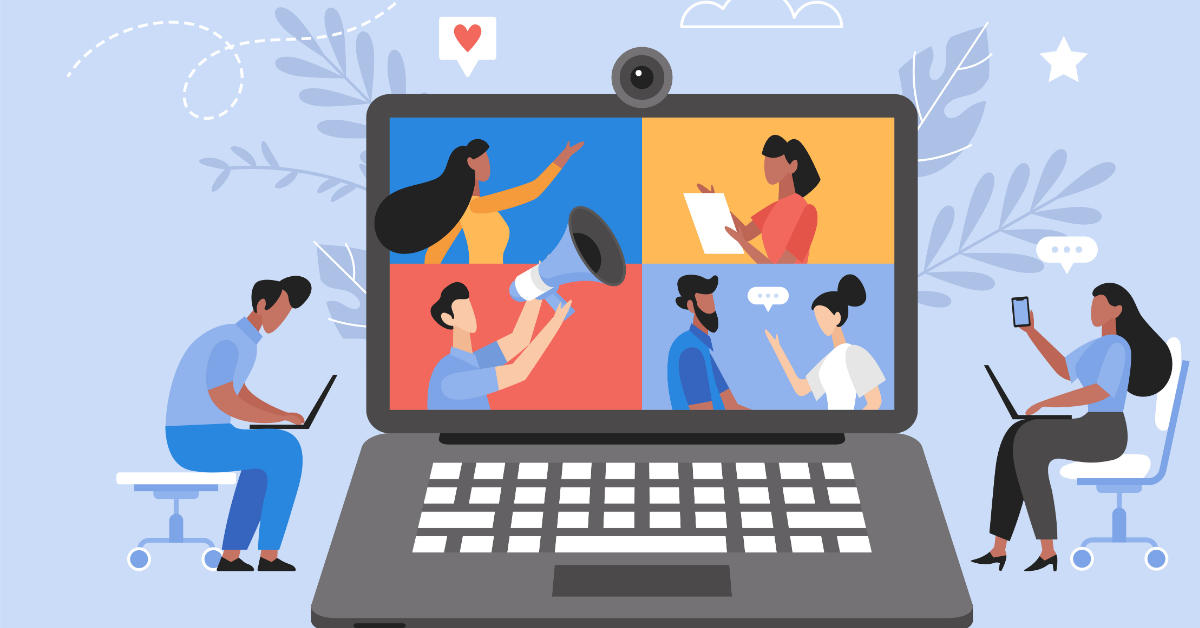Why is online chat (and specifically chatbots) the Next. Big. Thing? Well, 20 years ago shopping was done in via bricks and mortar. Or, if you made the big leap to order something over the phone, you’d have to wait a good couple of weeks for it to arrive.
These days, shoppers don’t have that much patience. If we want something, we go and get it right now. If we order something online, there’s a high likelihood it’ll be on our doorstep tomorrow morning - perhaps even this afternoon.
And B2B sales back then was completely different too. The expectation was that the process of making a sale might take weeks, and fulfilling it might take even longer!
Fast, Easy & Convenient Sales
Today, both B2B and B2C customers expect a more immediate response and frictionless sales process.
How consumers communicate with their favourite online stores has changed significantly over the last few years too, and that's what we're here to talk about today.
Instant messaging and live chat makes it easy for consumers to inquire about products or resolve issues. This kind of at-the-ready interaction gives consumers an excellent customer experience which will keep them coming back for more.
B2B Sales with a B2C Way of Thinking

It’s a real surprise, then, that despite this kind of ‘new-age technology’ working so well for B2C businesses, B2B companies haven’t jumped on the bandwagon too. Many businesses still ask B2B buyers to fill out forms just to talk to a sales rep. This immediately puts a barrier between a customer and a business and dramatically slows down the sales process. Chat and instant messaging tools are proven ways to communicate with customers and encourage sales in the B2C space, yet a huge proportion of B2B companies don't have the tools to start a real-time conversation with their customers.
Your B2B customers are also B2C customers. When they’re not working, they’re online trying to decide what Christmas presents to buy their kids. They’re ordering a pair of shoes that will hopefully fit because they don’t have time to try them on in a shop. They’re watching the latest episode of their latest favourite show on Netflix, and they’re booking a table at their significant other’s favourite restaurant without having to pick up the phone.
It makes sense, then, that B2B companies start offering their customers a similar customer experience instead of forcing them to carry out an old-school way of communicating and buying. Increasingly, that’s a move to chat.
How to Use Chat to Improve Your B2B Sales

A global study of more than 6,000 consumers revealed that almost 90% of B2B buyers would rather engage with brands via messaging, not forms, emails or over the phone. The same study revealed some pretty cool numbers when a few B2B companies started thinking more B2C:
- Sales enablement platform SalesRabbit doubled their qualified leads and increased demos booked by 40% by adding a chatbot and real-time messaging to their site;
- MongoDB increased sales opportunities by 170% and scaled sales conversations by adding intelligent chat to their site;
- Marketing agency Six and Flow cut the length of the sales cycle by 33% with the help of real-time messaging.
But while those stats are pretty impressive, it’s easier said than done when it comes to implementing your own chat strategy. Need a prod in the right direction? Here are some handy hints.
#1: Say ‘hi’
Forget making visitors to your website fill out a form and download some content; now it’s all about engaging them with a real person (sometimes that might mean a ‘real person’) as soon as they arrive. Real-time messaging software like Drift gives you the ability to interact with a potential customer using a chatbot or a human - you choose.
Sales can’t start until you say ‘hi’ to your customer.
- Be friendly, not confronting.
- Be willing to help, not pushy.
- If you’re using humans, have a bunch of pre-made greetings and responses on-hand to make the experience easier.
- Use language that you’d use in real life verbal conversations so you come across as being personable and genuine.
- Don’t be afraid to add humour to your chats. This makes it easier for you to engage and more likely for the customer to respond.
#2: Connect with potential customers
Especially when it comes to B2B, a customer knows they’re going to be sold to - it comes with the territory. But with chat and instant messaging, it’s significantly easier for a prospect to end a conversation with you than it would be face-to-face or over-the-phone; they just have to hit that big X in the corner.
After you’ve said ‘hi’, it’s time to get onside with your potential customer.
- Don’t drive to sell; use this opportunity to figure out if your product or company is a good match for them.
- Make a personal connection with your prospect.
- Show your personality.
- Show empathy.
#3: Shut up and listen
If you show genuine interest in what your customer has to say, they’ll be more likely to want to listen to you when it’s time to make a sale. Your prospect needs to think they’re the most important person in the world to you (even if they’re the 12th person this morning who has had the same problem) so resist the urge to smash out solutions on your keyboard.
- Don’t be pushy; let them talk and explain their problems and the solution they’re looking for.
- Don’t put words in their mouths, and don’t assume you know what they’re going to say.
- Ask open-ended questions that encourage them to communicate back to you.
- Respond to their problems empathetically, eg: “So, if I understand you correctly, you’re trying to {do this} but you’re having problems with {this}?” or, “Tell me more about {this trial you’re experiencing}.”
#4: Show the value of your solution
It can be very tempting to jump ahead to the ‘book a meeting’ stage now but hold your horses a little more, buddy. Before you both get to the next stage of the sales journey, it’s important to establish whether you’re both going to be a good fit for each other, because time is precious for everyone involved.
To find out if your solution is going to be useful to their specific problem, you need to be specific with your question lines.
- Describe your offering in a way that directly relates to their problem.
- Ask for some of their funnel metrics like leads, close rate and average sale price so you can figure out their current benchmark.
#5: NOW you can book a meeting
Successfully getting through points #1-4 means you can finally book a meeting with a prospective client - but it can be a bit tricky sometimes.
- Continue the empathetic lines of communication right through to finally closing a deal.
- Think about encouraging them to partake in a quick video chat which will make the process more personalised and get you closer to a positive sales outcome.
- Never leave a chat open to interpretation; always drive towards an outcome, whether that’s booking a meeting or actually making a sale.
Pull, Don’t Push
Buyers don’t want to be hassled, forced or pushed into a decision. They don’t want to be sold to. This could be problematic for old-school sales teams who refuse to look to the future.
Ultimately, if sales departments want to keep up with their customers, their sales techniques need to evolve with their customers’ technology habits. Chat is just one way to do this. Give them a sales experience that’s useful and genuine. By developing a personal relationship - one that cares - sales results will come by themselves.
Find out more about how chat and real-time messaging could help your business by chatting with Nick O’Neill, Hype & Dexter’s Commercial Director, today
How are you currently using chat and real-time messaging in your business? Let us know in the comments below.





Comments